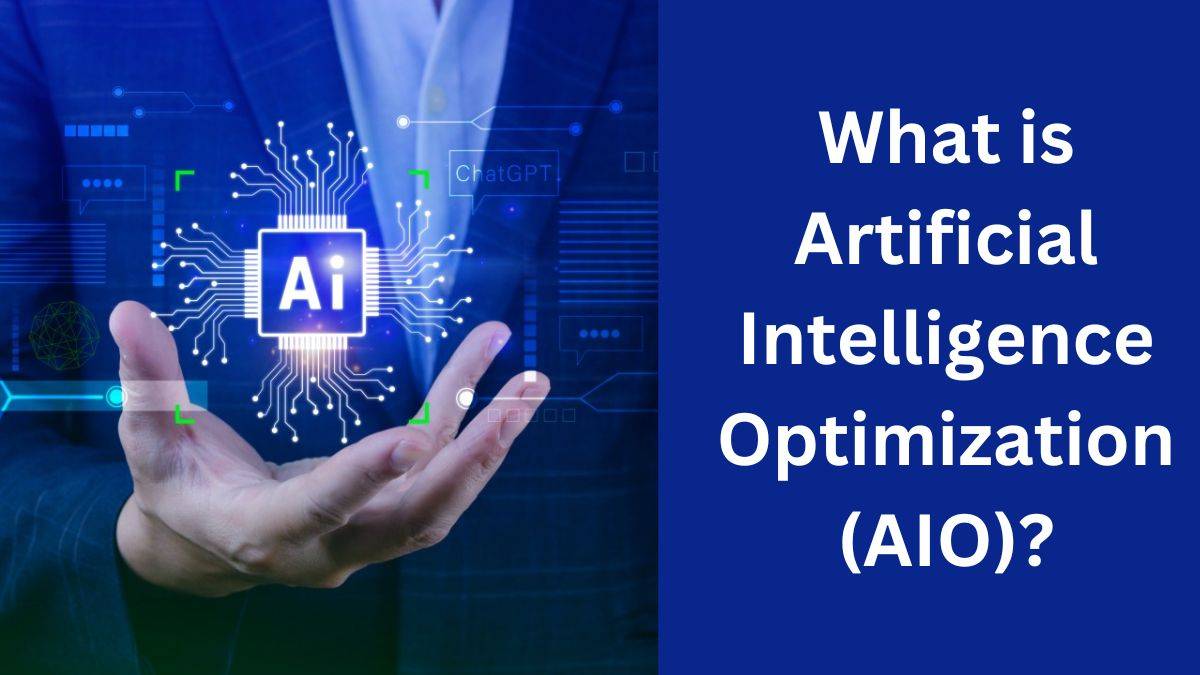Artificial Intelligence (AI) is becoming more powerful and more prevalent across industries, from personalized recommendations on streaming platforms to autonomous vehicles. But as AI grows in complexity, it also requires more resources to operate efficiently. This is where Artificial Intelligence Optimization (AIO) comes into play. AIO is a set of techniques that fine-tune AI models, making them faster, leaner, and capable of running on various devices without compromising accuracy.
For those familiar with Search Engine Optimization (SEO), it’s worth noting that AIO is quite different. While SEO focuses on making content discoverable on the web, AIO is about improving the performance and efficiency of AI systems themselves. Let’s dive into the world of AIO and explore how it makes AI better suited to modern applications.
The Purpose of Artificial Intelligence Optimization (AIO)
Artificial Intelligence Optimization is essential in a world where AI models are becoming increasingly large and resource-intensive. AI systems often require powerful hardware, high amounts of data, and a lot of time to function effectively. By optimizing these models, developers can ensure that they run faster, use less memory, and work across different devices, including mobile phones and edge devices.
How is AIO Different from SEO?
While both AIO and SEO involve optimization, their purposes and techniques are entirely distinct:
1. AIO (Artificial Intelligence Optimization):
- Focuses on improving AI models by making them faster, smaller, and more efficient.
- Involves techniques like model pruning, quantization, and hyperparameter tuning.
- Aims to optimize the model’s performance rather than improve search visibility.
2. SEO (Search Engine Optimization):
- Focuses on optimizing web content so it ranks higher on search engines like Google.
- Uses strategies like keyword optimization, backlinks, and metadata improvements.
- Aims to increase the discoverability of content rather than improve computational efficiency.
In short, AIO is about enhancing the internal mechanics of AI, while SEO is about making content more accessible and discoverable online.
Key Benefits of Artificial Intelligence Optimization (AIO)
- Enhanced Speed and Responsiveness: AIO techniques make AI models faster, which is crucial for real-time applications like facial recognition or autonomous driving.
- Reduced Costs: Optimized models require less processing power, which saves on both hardware and energy costs.
- Better Accessibility: By reducing the resources AI models need, AIO allows them to run on a wider range of devices, from powerful servers to mobile phones.
- Improved User Experience: Faster, optimized AI systems deliver smoother experiences, especially in applications that require real-time feedback.
How Artificial Intelligence Optimization (AIO) Works
AIO involves several stages, each addressing a specific part of the AI development process. Here’s a breakdown of the core techniques used in AIO:
1. Data Optimization
Data is the foundation of AI, and optimizing it ensures that models learn effectively:
- Data Cleaning: Removes irrelevant data to streamline model training.
- Feature Selection: Focuses on the most important features, making the model simpler and faster.
- Data Augmentation: Increases data variability (like rotating or cropping images), which makes models more adaptable without requiring new data.
2. Hyperparameter Tuning
Hyperparameters are settings that affect how an AI model learns. Optimizing them improves the model’s accuracy and efficiency.
- Manual and Automated Tuning: Methods like grid search or random search help find the best values for hyperparameters.
- Neural Architecture Search (NAS): NAS algorithms explore various model structures to find the best-performing architecture for specific tasks.
3. Model Compression
Model compression techniques reduce the size of an AI model, allowing it to run faster and use fewer resources:
- Pruning: Removes unnecessary parts of the model, making it smaller and more efficient.
- Quantization: Lowers the precision of data (e.g., 8-bit integers instead of 32-bit floats) to save memory without sacrificing much accuracy.
- Knowledge Distillation: Transfers knowledge from a larger “teacher” model to a smaller “student” model, enabling similar performance with fewer resources.
4. Algorithm Optimization
Efficient algorithms are essential to AIO. By choosing the right algorithms, AI models learn faster and perform better:
- Stochastic Gradient Descent (SGD) Variants: Optimization algorithms like Adam and RMSProp speed up model training.
- Parallel and Distributed Computing: Distributing data or models across multiple devices accelerates processing.
5. Hardware-Specific Optimization
AI models can be optimized to make the best use of specific hardware:
- Accelerated Computing: Leveraging GPUs and TPUs, which are designed for AI tasks, significantly reduces computation time.
- Edge Computing: Running models on local devices rather than the cloud, which reduces latency and enhances privacy.
6. Deployment Optimization
Deploying optimized models means they can perform reliably in real-world applications:
- Batching and Caching: Grouping multiple requests or reusing previous computations saves resources.
- Model Retraining: Updating models with new data helps maintain accuracy over time.
Real-World Examples of AIO
AIO techniques are widely used across industries where efficiency is essential:
- Mobile AI Applications: AIO allows complex models, like voice recognition and image processing, to run efficiently on smartphones, conserving battery and improving response times.
- Autonomous Vehicles: For self-driving cars, real-time decision-making is crucial. With hardware-specific and model compression techniques, these vehicles process data on the go, ensuring fast, safe responses.
- Smart Home Devices: AIO enables AI-driven devices like virtual assistants to respond instantly while minimizing energy consumption.
Final Words
Artificial Intelligence Optimization (AIO) is a vital process for making AI models faster, more efficient, and more accessible across devices. Unlike SEO, which is designed to improve a website’s visibility, AIO focuses on the internal mechanics of AI, enhancing the system’s speed, accuracy, and adaptability. As AI technology advances, understanding AIO becomes increasingly important for developers, businesses, and tech enthusiasts who want to leverage AI’s full potential.
By investing in AIO, companies and individuals alike can maximize the performance and reach of their AI applications, making them not only powerful but also practical for widespread use.

